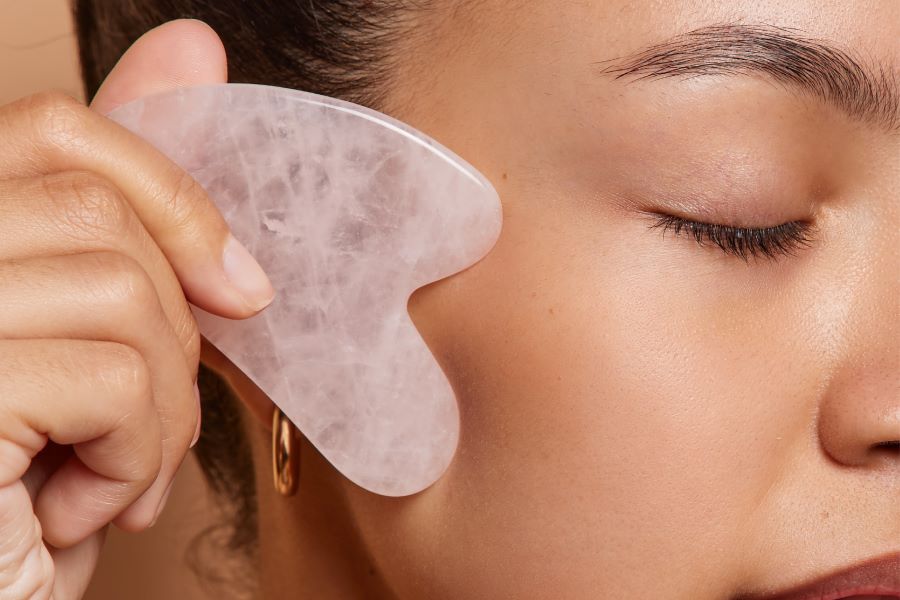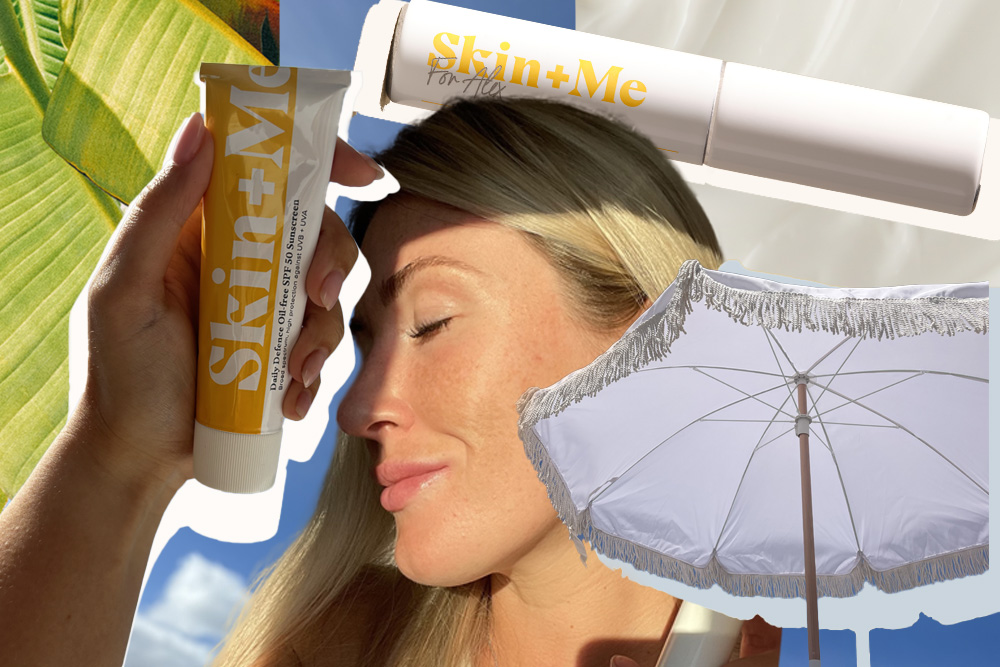Does Facial Massage Work?

Link to share article here:
Rosacea 101
This week sees the launch of our prescription strength treatment for rosacea. Rosacea is a commonly undiagnosed skin condition that affects around one in 10 people. To raise awareness and understanding of the condition, and ways to treat and manage it, we’re unpacking the facts.
What is rosacea?
Rosacea is a long-term skin condition that tends to affect the centre of the face. Typically rosacea will appear on cheeks, nose, chin and forehead. The visible symptoms include occasional or persistent redness, flushing and visibly broken small blood vessels. These symptoms can also include red spots, pustules and red blotches. Rosacea can also affect the eyes. Eyes can feel dry and gritty and may become red and sometimes even infected. Sometimes rosacea can cause the skin to look thickened and red. This particularly affects the nose (also known as rhinophyma). In rare cases, this skin thickening can also affect other parts of the face.
If you live with moderate to severe rosacea, it can impact your self-esteem, and trigger anxiety and depression. Left unmanaged, it can affect your overall quality of life, and social and psychological wellbeing.
Who gets rosacea?
Rosacea affects about one in 10 people although the numbers vary depending on studies. It was previously thought to be more common in women although more recent studies suggest men and women are equally affected.
Rosacea is more common in those with lighter skin tones of Celtic and northern European descent. But it can affect people with any skin tone or type. Numbers are likely underestimated as it is more difficult to diagnose rosacea in darker skin types as redness and broken blood vessels are more difficult to recognise.
It is more common between the ages of 30 and 50 although it can appear at any age.
What causes rosacea?
The cause of rosacea is not fully understood. Medical opinion is that it’s individual and complex and influenced by a lot of different factors. It’s thought to be partly genetic and caused by a dysregulation of our immune system, and of the nerves that control the blood vessels in our skin. Researchers are looking at the natural bacteria (microbiome) that live on our skin, which may play a role in triggering an immune system response in people with rosacea.
There are also a number of factors that lead to rosacea flare-ups. Certain foods, extreme temperatures and UV exposure can be culprits. Also psychological triggers such as stress or trauma. It is thought that people with rosacea are more sensitive to these triggers and their nerves and blood vessels react more easily.
How can I tell if I have rosacea?
Ideally, you should speak to a dermatologist to get a diagnosis. Sometimes it can be difficult to tell and it can overlap with other conditions such as acne. An expert will be able to identify the common signs and symptoms pointing to a diagnosis.
Rosacea causes characteristic flushing and redness. We all blush from time to time but if your symptoms are prolonged and last regularly more than 10 minutes, or if you have persistent redness of the cheeks it may be a sign of rosacea. Symptoms can be exacerbated by changes in temperature, certain foods or exercise, and if you live with the condition, you may already know the triggers that affect you most.
Other signs include inflammation of the skin causing redness, and a tight or dry and even itchy sensation on the face. This is typically most prominent over the cheeks. You may feel like you want to apply moisturiser constantly to combat the uncomfortable feeling.
Rosacea can cause spots such as red spots or pustules that can sometimes be difficult to distinguish from other causes of spots such as acne. One way to tell the difference is to look at exactly what type of spots are on your face.
Acne tends to cause blackheads (dermatologists call these comedones). Rosacea doesn’t cause blackheads. Sometimes acne and rosacea overlap. It is possible to have both conditions so if in doubt, you should speak to your GP or dermatologist for a diagnosis.
Rosacea can lead to skin sensitivity and your skin may feel a burning or stinging sensation. This can be made worse by applying certain cosmetics and sometimes the symptoms can be so severe that the skin becomes highly sensitised. If this is the case, medical treatment that targets the inflammation and repairs the skin barrier used alongside appropriate skin care can help.
Does rosacea have any triggers that I can avoid?
While the actual cause of rosacea is thought to be complex, there are some common factors that have been shown to worsen rosacea symptoms.
Alcohol, hot drinks, spicy foods, chocolate, cheese and citrus fruits can trigger or worsen rosacea.
Environmental factors such as extreme temperatures and sunlight have been shown to worsen rosacea. Certain medications such as steroid creams can worsen or even trigger rosacea. Choosing the right cosmetics and skincare is also important. Dermatologists recommend you avoid harsh exfoliation, stronger acids and occlusive moisturisers that can all make the symptoms worse.
How can I treat rosacea?
The treatment of rosacea is a combination of measures that all work together. They include choosing the right skincare, addressing lifestyle factors that may trigger rosacea, medical treatment (the type and combination of which depends on the type of rosacea you have) and addressing the psychological impact of the condition.
When it comes to skincare, keep things as simple as possible (think: skinimalism) and this is particularly important if your rosacea is active and you suffer from inflammation and spots.
Choose gentle cleansers that are low on actives such as acids or oils to avoid aggravating irritation and spots. Go for lighter moisturisers that don’t block pores and avoid moisturisers with anti-inflammatory ingredients that can actually make matters worse. Inflammation is best tackled with prescription-strength ingredients. Always include SPF in your daily routine. It’s a fact that UV exposure is known to trigger and worsen rosacea.
When it comes to medical prescription-strength ingredients, treatment is focused on tackling the inflammation and breakouts and separately tackling the symptoms of flushing and dilated blood vessels. It’s easier to treat the spots and inflammation that are the most common symptoms of rosacea, whereas other symptoms require different treatments.
The prescribed ingredients used in the Skin + Me Daily Doser to treat rosacea are usually Metronidazole, Azelaic Acid and Niacinamide, but these will vary in strength and be tailored to your skin type and skin goal.
By using prescription-strength ingredients, Skin + Me can help you achieve happy, healthy skin and reduce the redness of rosacea, as well as help manage future flare-ups.
Skin + Me does not currently treat other and less common types of rosacea. Broken blood vessels cannot be treated by creams and IPL lasers which are performed in-clinic are the gold standard treatment for this. Phymatous rosacea, which is when the skin thickens (on the nose for example), is usually treated with surgery in the most severe cases and dermatologists will often prescribe oral treatments to prevent progression. Ocular rosacea is usually treated with oral antibiotics and steroid eye drops. Flushing particularly when severe can sometimes be treated with oral blood pressure tablets which are carefully monitored by your doctor.
If you’re struggling with these symptoms of rosacea, you should speak to your GP or dermatologist.
How long does it take to treat rosacea?
We’re all a little different, but generally, it takes around two to three months to see results from your topical rosacea treatment. Others may find that it takes less time, or a little longer. Be sure to check in with your prescriber if you do not see any results after eight weeks. Remember, consistency and patience are key to achieving good results. Once you’re happy with your progress, your prescription can evolve to maintain progress and manage future flare-ups.
What are the myths around rosacea?
Rosacea is a frequently misunderstood condition, with the most common rosacea myths are listed below.
Only white people get rosacea
Rosacea may be more common for those with fairer skin tones, but people of colour do suffer from rosacea. And, their concerns are often dismissed because the symptoms are harder to identify on darker skin tones. If you have darker skin and aren’t noticing any major redness but have many of other symptoms, such as skin sensitivity and spots, you should speak to a dermatologist about the possibility of rosacea.
Rosacea is caused by drinking
A red face has long been associated with heavy drinking, as has the enlarged nose that can be caused by a subtype of rosacea. However, drinking does not cause rosacea, but it can be a trigger that causes symptoms to flare-up or worsen.
Wearing makeup causes rosacea
Makeup doesn’t cause rosacea, but some types of makeup and fragranced products, cause irritation which can trigger rosacea. Learn the ingredients that work best for you. Choose simple products with a minimal routine, daily SPF and a balanced lifestyle. Minimising stress is easier said than done, but give yourself permission to relax. Your skin will thank you for it.
Medical facts checked by Consultant Dermatologist, Dr Jason Thomson
You might also like…
Medical facts checked by Consultant Dermatologist, Dr Ben Esdaile



